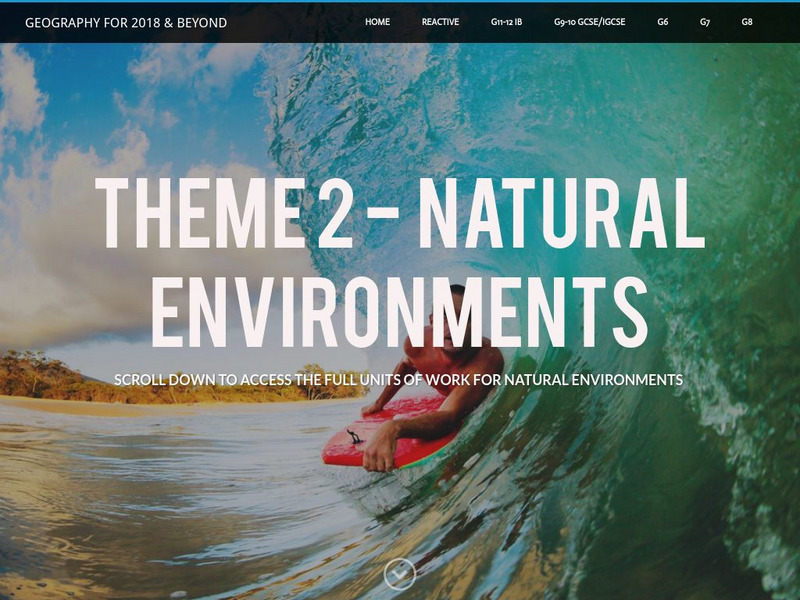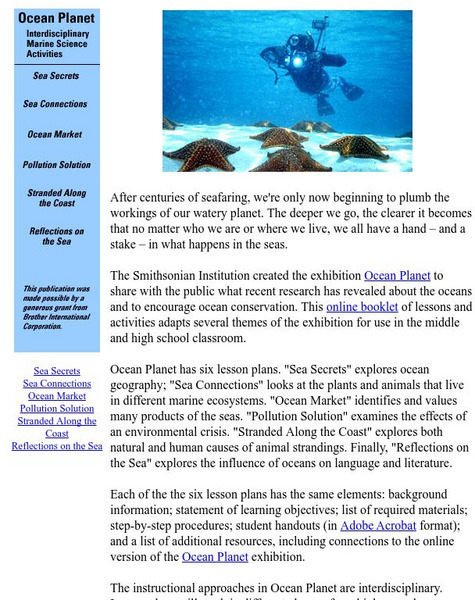Hi, what do you want to do?
Curated OER
Population Dynamics
Students watch a video on population dynamics. They conduct an experiment where they fill up a designated space with students. They recreate multiplying rabbits using beans.
Curated OER
Take a Dip: The Water in Our Lives
Students explore the function of storm drains and the importance of keeping them clean of debris. They obtain permission from local authorities and perform community service painting stenciled messages near existing storm drains.
Curated OER
Investigating Animals in Water
Young scholars observe small animal activity. They identify local water animals and describe the habitats where water animals can be found. Students collect samples to observe in the classroom.
Curated OER
From Polliwog to Frog
Students examine how frogs change. In this life cycle activity, students create a model to show how a frog changes throughout its life. Students will show the process of frog metamorphosis, from polliwog to adult frog.
Curated OER
Are You Thirsty: The Effects of Pollution on Drinking Water
Learners discuss the different causes of water pollution. In this ecology lesson, students brainstorm ways to purify polluted water. They formulate their conclusion based on the results of the experiments.
Curated OER
Heavy Duty
Students examine various items in order to realize the weight difference between train, vehicles and humans. They realize that trains are heavy and cannot stop quickly.
Curated OER
Ani-mania
Students view and discuss Robert Harris' farm landscapes and create their own mural out of wood. In groups, they discuss various issues affecting pets throughout the world and create a way to protest or celebrate the issue. They try to...
Curated OER
Endangered Species and Extinction
Fourth graders explore endangered species and extinction. They discuss and write three reasons why it is important to save animals from becoming endangered or extinct. They discuss The Great Kapok Tree and write a letter discussing...
Curated OER
Harnessing Solar Energy
Students identify the properties of light from the sun. In groups, they participate in experiments with solar collectors, cookers and calculators to determine which one harnesses the most energy. They record their observations and...
Curated OER
Workers on Sea and on Land
Learners use photos of sailors and workers in the shipbuilding industry as a reference point to generate questions and investigate the working conditions for resource industry workers in 19th and 20th centruy Atlantic Canada and the...
Curated OER
CSI Clamshell Investigation
Students explore predator/prey relationships. They research information on moon snails and claims. Students draw conclusions from the data collected. They use math and graphing to determine if there is a relationship to the clam's size...
Curated OER
Design a Pollinator
Students make a scientific drawing of a pollinator with at least five traits that make them well adapted to a given plant(s). They describe in their science notebook the adaptations that make their pollinator well suited to a given plant.
Curated OER
Feedback and Flowcharts
Sixth graders explain what a negative feedback system is and they distinguish it from a positive feedback system. They describe examples of how negative feedback is used in both nature and technology. , Students define homeostasis, and...
Curated OER
Geometric Shapes at the OK Corral
Students explore geometric shapes. In this math instructional activity, students identify geometric and non-geometric shapes using the computer. Students research geometric shapes in art and architecture.
Curated OER
Geometric Shapes at the OK Corral
Students explore regular geometric shapes. For this shapes lesson, students investigate geometric shapes in the world around them. Students differentiate between regular and irregular shapes.
Curated OER
3-D Figures Part 2
Students work with three dimensional objects. In this geometry instructional activity, students examine models of spheres, cones, cubes, prisms, and pyramids, and identify them by their edges, vertices, and faces.
Alabama Learning Exchange
Alex: Animal Environment and Adaptation
In this lesson, young scholars will enjoy different activities focusing on how animals adapt to their environments. They will begin by researching two animals, their environment, and the ways the animals adapt to this environment. In...
Mind My Education
Mind My Education: The Life of Environments
This extensive lesson plan covers various topics about how animals interact with their environment. Topics include how animals sense their environment, how environments and organisms change together, and how animals use their senses to...
Geographypods
Geographypods: Theme 2: Natural Environments
A rich collection of highly engaging learning modules on topics related to the natural environment. Covers four main areas - plate tectonics, forms and processes, weather and climate, and rainforest and desert. Within each of these,...
Khan Academy
Khan Academy: Design Challenge: Animating Grass
In this activity, students will Animate grass using the controls provided. It will show a single blade and a patch of grass.
BBC
Bbc Schools: Ks2 Bitesize: Science: Living Things: Plant and Animal Habitats
Place the aliens in the habitats where they can survive the best. Following the activity, read more about plant and animal habitats, and then take a quick quiz to check for understanding.
Smithsonian Institution
Smithsonian: Ocean Planet: Interdisciplinary Marine Science Activities
Smithsonian Institution presents ?Ocean Planet: Interdisciplinary Marine Science Activities?. Through this series of six interdisciplinary lessons, young scholars will look at such things as the organisms in different marine ecosystems,...
Science Education Resource Center at Carleton College
Serc: Mn Step: Animal Game Impact of Human Activity or Natural Disasters
A description of a lesson where students first listen to a story where they begin to think about and discuss the impact humans and natural disasters have on the environment. They then play a board game. This requires preparation...
Science Education Resource Center at Carleton College
Serc: Observing and Creating Sketches of an Outdoor Environment
Students use their senses to observe nature then sketch a plant and/or animal in their science journals using detail and color. Using these sketches, they will create classroom books which are shared with the class.




























